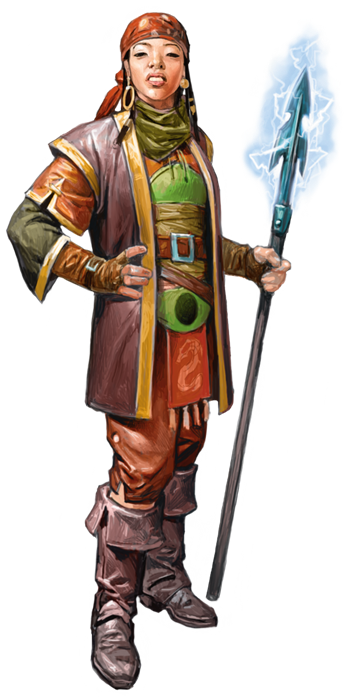 We’ve completed our second full rotation of the twelve classes in the Player’s Handbook, not to mention taken a deep dive into the first 5 levels of D&D’s thirteenth class, the inventive and arcane Artificer! This wave of the Class 101 series will appraise every subclass within the Player’s Handbook and break down each subclass’s strengths, weaknesses, thematic elements, and everything else a player would want to know before playing that subclass. Because of this, you will need to own the Player’s Handbook (or purchase the subclass a la carte on the Marketplace) in order to make full use of this series.
We’ve completed our second full rotation of the twelve classes in the Player’s Handbook, not to mention taken a deep dive into the first 5 levels of D&D’s thirteenth class, the inventive and arcane Artificer! This wave of the Class 101 series will appraise every subclass within the Player’s Handbook and break down each subclass’s strengths, weaknesses, thematic elements, and everything else a player would want to know before playing that subclass. Because of this, you will need to own the Player’s Handbook (or purchase the subclass a la carte on the Marketplace) in order to make full use of this series.
Though we’re currently still looking at subclasses found within the Player’s Handbook in the Class 101 series, several classes including the sorcerer only have two subclasses in that book. We’ll need to go beyond that must-have book to other optional D&D sources. This subclass is the Storm Sorcery origin, which can be found in Xanathar’s Guide to Everything, the first major rules expansion for fifth edition Dungeons & Dragons.
Check out the other guides in the Class 101 series, like the broad overview of the sorcerer class in Sorcerer 101: A Beginner’s Guide to Innate Magic, Sorcerer 101: Draconic Bloodline, and Sorcerer 101: Wild Magic. If you’re interested in playing other classes, check out the entire Class 101 series.
Story of the Storm Sorcerer
She awoke again, sweat rolling down her forehead, as another summer storm passed over Waterdeep. Her heart raced with excitement, though her ardor was twinged with more than a hint of fear. She was young, and her parents had forbade her from venturing out into the storms, ever since they found she had climbed up onto the roof a few weeks ago to watch lightning strike the tallest tip of the God Catcher, one of the city’s famous Walking Statues.
The teenager slipped out of her room and slid down the bannister to the ground floor of her family’s home—it was the quickest, quietest way, but it was also the way that felt most like flying. She’d had dreams of flying ever since she was old enough to remember. She had overheard her parents say once, speaking in hushed tones to her grandmother, that she had been born under one of the heaviest storms to have ever passed over the city, at the exact moment that a thunderclap exploded above their home.
Something about the power and fury of the storm caused her blood to pound. She stood on tiptoes to grab one of her mother’s heaviest cloaks from its hanger and threw it over her, then quietly took the stairs two at a time back up. She scurried to her window and cautiously unlatched it, then looked up to the ivy-covered latticework that climbed past it to the roof. Fat raindrops pelted her face, but she didn’t flinch. The warm summer rain on her face felt natural.
Before long, she was on the roof, the cloak rippling out around her in the wind. She closed her eyes and felt her heart fluttering, jolting slightly when it to hammered harder in unison with the thunderclaps that punctuated the staccato tapping of the rain. She wanted to feel it again—the power she had first felt years ago. She had felt it all her life, but was unable to explain exactly what it was, before her first big storm. It was a tingling in her fingertips, a thrumming in her chest, an indescribable need to be something more than herself. She shuddered as a bolt of lightning cracked the sky, and involuntarily raised her finger, as if to touch it.
Power like she’d never felt before welled up within her, and with a yell of panic and determination, she thrust her palm forward. A crackle of lightning burst from her fingertips, and she gasped and stumbled backward, landing hard on gently pitched roof of the house. She glanced down at her hand, still crackling with energy, and then back up at the sky. It was magic. The storm’s magic.
Her magic.
Storm Sorcery Features
Sorcerers in tune with the thrumming of the storm are conduits for powerful destructive magic—but they are not simply engines of destruction. The storm brings freedom and release just as easily as it brings death. The sorcerer gains four subclass features at 1st, 6th, 14th, and 18th level. You can read all of the Storm Sorcery features in Xanathar’s Guide to Everything. In summary, your subclass features allow you to:
- Speak Primordial, the language of elementals
- Fly whenever you cast a spell of 1st level or higher
- Become resistant to lightning and thunder damage
- Call the wrath of the storm upon nearby creatures when you cast spells of 1st level or higher
- Subtly control the weather around you
- Reactively call lightning upon those who hit you
- Become immune to lightning and thunder damage
- Grant yourself and your companions the power of flight
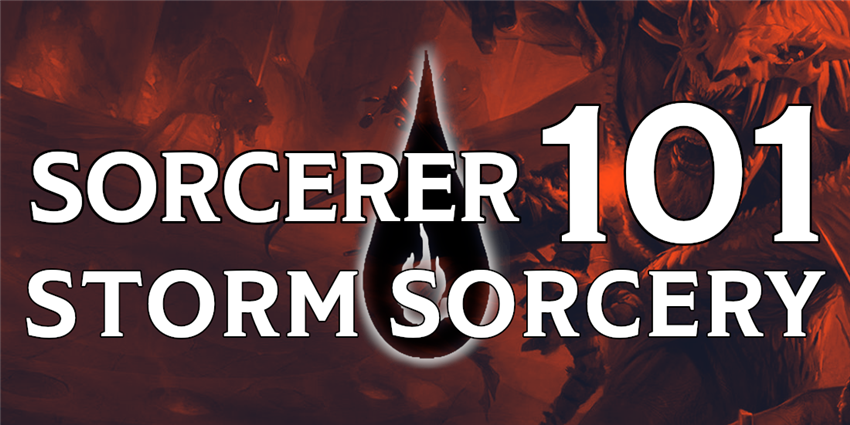
Benefits of Storm Sorcery
The Storm Sorcery subclass offers sorcerers an interesting power right from 1st level: the ability to fly. Even though their flight is limited, just a mere 10 feet and only when you cast a 1st level spell, flight at early levels is a powerful boon. In fact, one of the most powerful aspects of this feature isn’t that it lets you move without walking, but that it lets you move without provoking opportunity attacks. For a squishy, 1st-level sorcerer, being able to zip out of reach of one, two, or maybe even more monsters swarming around you is an enormous boon. Normally you would have to spend your action to Disengage, but this subclass allows you to still actively contribute to defeating your foes by casting one of your few, powerful spells.
This feature is just the foundation of a set of interesting abilities that the storm sorcerer gains as they level up. A storm sorcerer wants to be in the thick of combat, as evidenced by class features that let them deal damage in a close burst around them when they cast spells, and that let them reactively deal damage to foes that strike them. Taken together, this subclass’s Tempestuous Magic, Heart of the Storm, and Storm’s Fury features encourage a hit-and-run playstyle that sends your sorcerer into the heart of combat to knock foes around with magic, only to flee, but then still have juice left to blast away any foe that would pursue you.
Ultimately, you also gain resistance and immunity to your damage types of choice. This is a useful boon against some monsters, meaning they’ll be more useful in some campaigns than others. In this way, a Storm Sorcerer would be well-suited to Storm King’s Thunder, where lightning damage abounds, but perhaps less powerful in an adventure like Waterdeep: Dragon Heist, where it’s more infrequently used.
Drawbacks of Storm Sorcery
The greatest problems with the storm sorcerer are endemic to the sorcerer class itself. Namely, the sorcerer’s limited spells known and inability to learn new spells like a wizard might add spells to their spellbook can make you feel like your role in the party is incredibly narrow and predefined, with little room to rework your arsenal if you don’t like your pigeonhole. The Storm Sorcery subclass encourages you to take offensive spells that deal boatloads of lightning and thunder damage, but unless you’re careful with your spell selection, you may find yourself lacking the ability to do much of anything else.
Likewise, your class’s inability to cast spells as rituals is a minor drawback that makes it less useful for you to learn spells like detect magic, since you can’t cast them as a ritual. Try to have a clear idea of what you want to be able to do in-combat, during exploration, and during social interactions when you start playing a sorcerer; it will help you in the long run.
Suggested Build
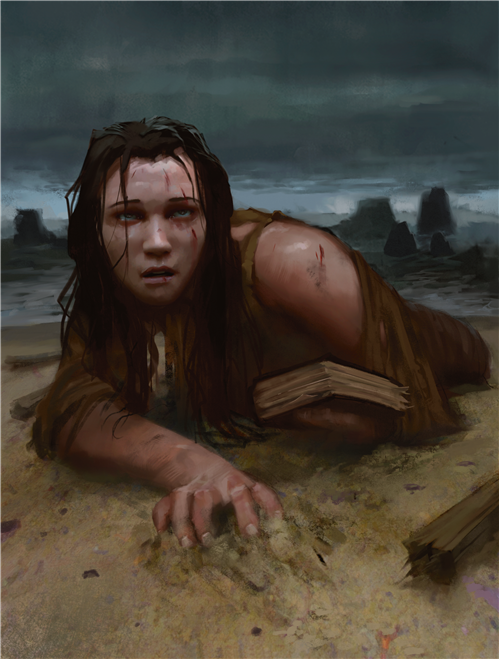 As a sorcerer, you get to choose your Sorcerous Origin at 1st level! While this means that you get to reap the benefits of your subclass from the very beginning, it also means that you don’t have any time to “settle in” to your role and figure out how you want to play your character before making this big decision. Consider your subclass carefully!
As a sorcerer, you get to choose your Sorcerous Origin at 1st level! While this means that you get to reap the benefits of your subclass from the very beginning, it also means that you don’t have any time to “settle in” to your role and figure out how you want to play your character before making this big decision. Consider your subclass carefully!
You should choose a race that improves your Charisma score and either your Dexterity or Constitution scores. As a sorcerer, Charisma is your most important ability. Your spells are powered by your own confidence, force of personality, and determination—rather than any sort of formal study—which is represented by your Charisma. Dexterity helps give you a vital boost to your Armor Class, since you won’t be wearing much armor. On the other hand, Constitution does double duty by making it easier to hang onto spells that require concentration in addition to improving your hit points. Either choice is useful!
Tieflings make excellent sorcerers, since they boost your Charisma and also give you a few extra spells that you can cast as a racial ability rather than learning through your class. Half-elves are also great, since they come with a big Charisma boost and let you boost two other ability scores of your choice. Lightfoot halflings are both dexterous and charismatic, and their other racial traits will serve you well. If you don’t mind hating the sun, playing as a drow is an attractive proposition, since they also give you a boost to both Charisma and Dexterity, as well as a few extra spells. And, as always, the variant human race is never a bad pick.
The Class 101 series tries not to suggest options that aren’t in the Player’s Handbook or the supplement that the current week’s spotlighted subclass is from (in this case, Xanathar’s Guide to Everything) but it should be said that genasi, particularly air or water genasi, are well-suited thematically to this subclass. They’re available in the free Elemental Evil Player’s Companion source.
As usual, your character’s background is up to you. Sorcerers can come from anywhere, since their magic spontaneously appears as a result of some arcane confluence. Unlike the Draconic Bloodline sorcerer, your magic powers aren’t necessarily related to your genealogy, though you may have another famous storm sorcerer in your family tree. As such, any background suits you, and can make an equally interesting story.
Choose EQUIPMENT instead of GOLD at the end of character creation. Since you’ll probably be choosing at least one ranged damage-dealing cantrip, you can safely forgo choosing a light crossbow in favor of a simple weapon, like a quarterstaff or a dagger. Whether you choose an arcane focus or a component pouch is purely a flavor choice (do you like using a wand or a magical crystal to focus your arcane power into spells, or do you want to use eye of newt and toe of frog to make magic happen?). If you think you’ll be in dungeons a lot, take a dungeoneer’s pack. Otherwise, go explorer. Finally, you get two extra daggers. Keep those hidden, just in case!
Spells
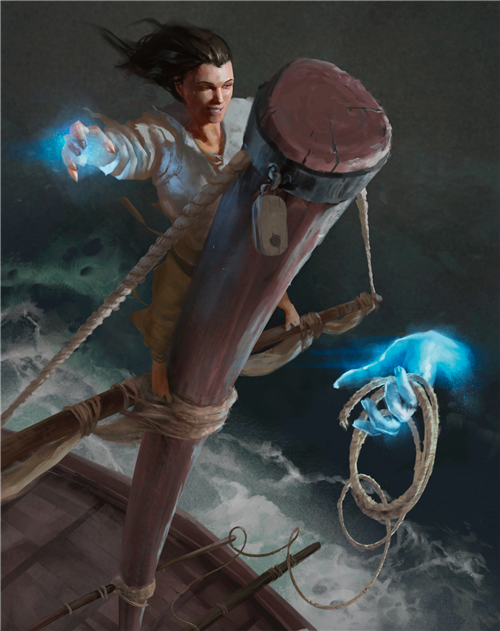 Choosing spells is a big deal for any caster, but you need to be particularly choosey. Sorcerers don’t learn many spells over the course of their career, so you’ll want to get pretty familiar with your spells. You’ll be using them for a long time. Unless, of course, you take full advantage of spell swapping—that is, trading an old spell out for a new one when you gain a level.
Choosing spells is a big deal for any caster, but you need to be particularly choosey. Sorcerers don’t learn many spells over the course of their career, so you’ll want to get pretty familiar with your spells. You’ll be using them for a long time. Unless, of course, you take full advantage of spell swapping—that is, trading an old spell out for a new one when you gain a level.
You get four whole cantrips at 1st level, so you still have a handful to choose from! These are all the sorcerer cantrips from the Player’s Handbook that you can choose from. You should choose at least one long-range damage cantrip, one close-range damage cantrip, and two others of your choice that you can use for utility. Since this subclass is from Xanathar’s Guide to Everything, it’s important to look at the sorcerer cantrips from that book as well; thunderclap is a useful one for you, both because of its appropriate damage type and because it encourages you to get into the fray!
With your cantrips chosen, you now get to select two 1st-level spells that you know. You’ll learn one new spell every level until 10th level, and then one new spell every other level after that until 17th—at which point you’ll stop learning spells entirely. Choose wisely! You’ll want one spell marked OFFENSE, and one spell marked either DEFENSE or SOCIAL, depending on how you want to play your character. All OFFENSE spells have their damage type labeled as well, to help you pick which is best for your Storm Sorcery.
- Chaos bolt (OFFENSE)
- Charm person (SOCIAL)
- Disguise self (SOCIAL)
- Fog cloud (DEFENSE)
- Ice knife (OFFENSE)
- Mage armor (DEFENSE)
- Magic missile (OFFENSE)
- Thunderwave (OFFENSE)
- Shield (DEFENSE)
Feats
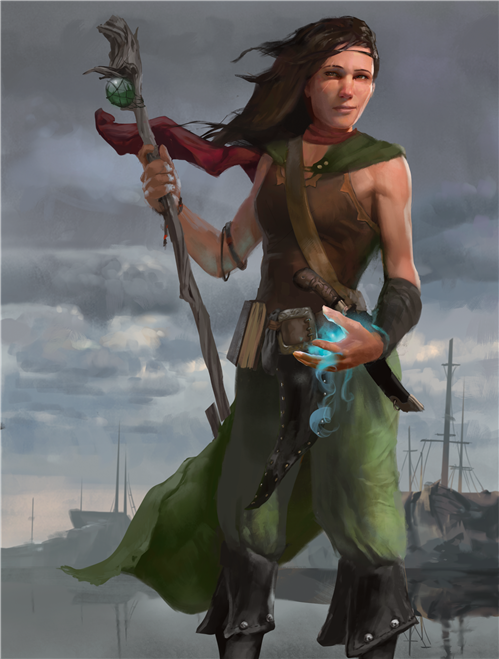 Once you’ve improved your Charisma score to 18 or 20, you can increase your power with a few useful feats. The following feats are good picks for storm sorcerers, and will improve your reliability in your own desired area of expertise:
Once you’ve improved your Charisma score to 18 or 20, you can increase your power with a few useful feats. The following feats are good picks for storm sorcerers, and will improve your reliability in your own desired area of expertise:
Inspiring Leader. Your already-high Charisma makes you an excellent candidate to be the social face of your party. As your character becomes more confident in their own abilities, having them become a leader that inspires your allies to great deeds is an excellent story beat, with some good mechanics attached.
Ritual Caster. Unlike many other spellcasters, sorcerers can’t cast spells as rituals. They feel their spells intuitively, so the complexities of rituals are beyond them. This feat, however, lets you invest in a spellbook for ritual spells—perhaps as the result of wizards trying to tutor you in an attempt to control your wild magic. This precludes the need to spend your precious spell slots (and precious spells known) on ritual staples like detect magic and find familiar.
Tough. You’re a sorcerer who wants to get into the thick of combat, using close burst area of effect spells and cantrips while making the most of your subclass features. You also have a d6 Hit Die, so having some extra hit points couldn’t hurt. This feat is one way to make that happen.
War Caster. Though often suggested for clerics and paladins, this feat works quite well with the Storm Sorcery subclass. Since you want to be constantly hitting-and-running from your foes, the ability to use your spells or cantrips (like shocking grasp) to make opportunity attacks is a huge boon. Being able to hang onto your concentration spells more reliably is a nice bonus, too!
If you want more advice for building a sorcerer, check out Sorcerer 101. Have you ever played a storm sorcerer? What advice would you give to players that want to play this subclass? Come back next week as we explore the eldritch power of the Great Old One warlock patron!
Create A Brand-New Adventurer Acquire New Powers and Adventures Browse All Your D&D Content
 James Haeck is the lead writer for D&D Beyond, the co-author of Waterdeep: Dragon Heist, Baldur's Gate: Descent into Avernus, and the Critical Role Explorer's Guide to Wildemount, a member of the Guild Adepts, and a freelance writer for Wizards of the Coast, the D&D Adventurers League, and other RPG companies. He lives in Seattle, Washington with his fiancée Hannah and their animal companions Mei and Marzipan. You can find him wasting time on Twitter at @jamesjhaeck.
James Haeck is the lead writer for D&D Beyond, the co-author of Waterdeep: Dragon Heist, Baldur's Gate: Descent into Avernus, and the Critical Role Explorer's Guide to Wildemount, a member of the Guild Adepts, and a freelance writer for Wizards of the Coast, the D&D Adventurers League, and other RPG companies. He lives in Seattle, Washington with his fiancée Hannah and their animal companions Mei and Marzipan. You can find him wasting time on Twitter at @jamesjhaeck.








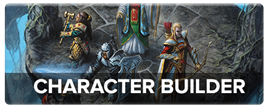
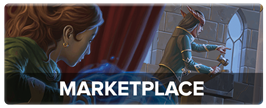
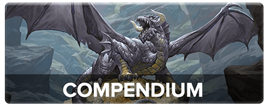
-
View User Profile
-
Send Message
Posted Oct 26, 2020First, looks cool! Still annoyed you have to pay for the content, tho.
-
View User Profile
-
Send Message
Posted Oct 26, 2020good article i really like storm sorcerer but i hear complaints how they are built for melee
-
View User Profile
-
Send Message
Posted Oct 26, 2020Great in melee but you have the option of wearing in and out of melee very easily, laying down heavy damage and then retreating. if you are focused on long range your kit can become a built in snipers nest for evading if not outright eviscerating melee combatants, before continuing to pick off opponents
-
View User Profile
-
Send Message
Posted Oct 26, 2020Love the article!! Storm Sorcery is my favorite sorcerer subclass. One mistake though. In the beginning of the feats section, it says once you’ve improved your wisdom score you can go for feats. Shouldn't it say Charisma?
-
View User Profile
-
Send Message
Posted Oct 26, 2020This subclass along with ALL the Sorcerer subclasses just SCREAMS for 4-6 free spells known thematic to the class. Even just the following would be a huge thematic boost to the class.
You learn additional spells when you reach certain levels in this class, as shown on the Storm Sorcery Spells table. Each spell counts as a sorcerer spell for you, but it doesn’t count against the number of sorcerer spells you know. These spells can’t be replaced when you gain a level in this class.
1st Level- Thunderwave
3rd Level- Shatter
5th Level- Lightning Bolt
7th Level- Storm Sphere
-
View User Profile
-
Send Message
Posted Oct 26, 2020Great piece! I've only played 1-5 levels with the Storm Sorcerer but I liked playing her more than I thought I would.
-
View User Profile
-
Send Message
Posted Oct 26, 2020How do you think WotC will make money if you can just go on D&D Beyond and use all the books for free? And if they dont make money, there goes D&D.
-
View User Profile
-
Send Message
Posted Oct 26, 2020I second the motion.
-
View User Profile
-
Send Message
Posted Oct 26, 2020Third. A big weakness.
-
View User Profile
-
Send Message
Posted Oct 26, 2020fourth and even WOTC agrees as new ua have new spells
-
View User Profile
-
Send Message
Posted Oct 26, 2020Just question, but does anyone build characters based on the characters in the summary/story section?
-
View User Profile
-
Send Message
Posted Oct 26, 2020I keep on trying to play a storm sorcerer, but never get to making a character.
Probably because I rarely make sorcerers, but if I did, this would be one of my top choices.
-
View User Profile
-
Send Message
Posted Oct 26, 2020Yeah. I feel you.
-
View User Profile
-
Send Message
Posted Oct 26, 2020With storm sorcery movement, I like to picture a Goliath sorcerer being pushed along the floor leaving large ruts and making the sound Will Smith made pulling the table at the beginning of MIB.
-
View User Profile
-
Send Message
Posted Oct 27, 2020I think they realized how sorcerers & rangers just don't measure up, & that's why the new subclasses give more spells. How many players actually go full sorceror?
-
View User Profile
-
Send Message
Posted Oct 27, 2020Not sure, but a sorcerer 17/warlock 3 eldritch spammer is pretty tough, especially combined with the sorcerer's hold person.
-
View User Profile
-
Send Message
Posted Oct 27, 2020Sorcerers literally cannot learn identify it is nor in their spell list.
-
View User Profile
-
Send Message
Posted Oct 27, 2020The limited number of spells a Storm Sorcerer knows is compounded by how few spells there are on the sorcerer list that deal thunder or lightning damage. I really hope Tasha's Cauldron of Everything helps with that.
-
View User Profile
-
Send Message
Posted Oct 27, 2020I do think sorcerers would benefit from that immensely, but at least Divine Soul gets access to the full cleric spell listings, so I guess that's nice.
-
View User Profile
-
Send Message
Posted Oct 27, 2020Love the article! But I do prefer shadow sorcery. That is just perfect 👌 for drow. And yes, if dnd beyond gave everything out free, either dnd is gone in the wind or we have to look at 5000 adds every time we read one of these articles